Hey everybody, Peter Zion and coming to you from the ever increasingly foggy document trail. This is the next in our ask Peter series that was born out of my airline delay. Today. The question is about Joe Manchin, the Republican or certainly the Democrat from West Virginia, who has managed to insert a couple of clauses into the deal with the White House to extend the debt ceiling. Specifically, it’s something that I mentioned has been after a while, which is permitting and federal approval to get a new pipeline built through West Virginia to ship natural gas.
Environmentalists hate it because natural gas, pro fossil fuel folks obviously think it’s okay. The truth is that everyone’s right, I mean, everyone’s wrong. So let me kind of laid out what it means.
Let’s start with the green side, for those of you who think that solar and wind is the future of energy, and that any sort of fossil fuel is just antithetical to that future, you’re clearly very bad at math. Just think of every day in your life, when the sun goes down, solar no longer works. And while you can use batteries a little bit, the United States right now has less than a couple minutes of battery storage.
And there is not enough lithium on the planet for the United States to get to four hours of battery storage. And we don’t have a battery chemistry that would allow us to go not just through the night, but through the winter. And through periods, where there’s usually not a lot of sun, which if you live in the American Northeast is the vast majority of the year. So you need a complimentary power source that can work with solar and wind. And the best way to do that is with natural gas, you basically use solar when it’s available, and you have a combined cycle natural gas that can plant they can spin up in 10 to 15 minutes, whenever the gets cloudy, or whenever the sun goes down, you know, every day,
for the foreseeable future until we have a better better technology, or better solar, or probably better wind is what would get there first. This is just where we’re going to go. So if you want to build solar, and wind without a complementary system, you’re then basically forcing anyone who needs emergency power to use a diesel generator. And as we’ve seen, in the case of Germany, they have used lignite coal as the backup and you can’t spin that up and down in 1015 minutes, you have to leave that on the whole time. So despite $2 trillion in green tech build out, Germany’s carbon emissions have actually gone up. So you know, there’s a problem. Now, for those of you on the fossil fuel side who say that intermittency of solar and wind means that it’s not a viable power source. And it can only exist with subsidies, you’re not very good with math, either. Solar and wind in the right geographies are now the cheapest way of generating power on an hour by hour basis. Now, hour by hour being the key word there, there’s something that some folks like us called the levelized cost of operation, meaning that you average the cost out over the 24, hour three to 24, hour, day three and a 65 day a year period, that’s really not a great measure. Because when the sun stops shining, the power goes down to zero, you still need it. And that’s not reflected in the levelized cost. Or at least not sufficiently, in my opinion. Because you know, when you don’t have power, and you need power, you will pay whatever you have to do to get power.
There are parts of the country that can do more of one or the other. So if you’re in the American northeast, which is neither sunny nor windy, you know, fossil fuels are going to be a much bigger part of your power mix going forward, then it can be in the rest of the world. However, if you’re in the southwest, you’re in a place that has great sun. And if you were the Southwest overlaps with the Great Plains, you great great sun and wind. And that means ultimately, more and more and more things like what mansion is after, keep in mind, the pipeline he was in so much in love with the way he wants to get this done is not just a one off approval for a pipeline across the state line. He wants that for all energy infrastructure. And obviously, the green cell is think This only means pipes. But it also means power lines. Because if we’re going to move to a cleaner, greener future, we have to be able to move electrons from where they can be generated with solar and wind to where we actually live. And since the single largest concentration of population is on the American north east coast, and that’s where none of the green power comes from. we’re ultimately going to have to run this in by wire from other places. So we need more and more transmission more than we need something like batteries right now, at least with today’s technology. So the future of American electricity isn’t green, but it’s also not fossil fuels. It’s both. I’m okay with that.

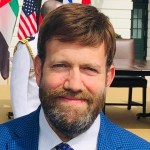
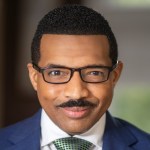


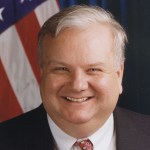
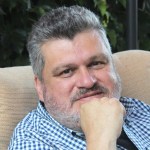
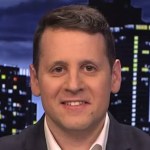

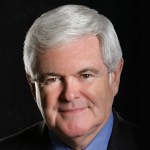






Peter Zeihan
Geopolitical Strategist
Commentary
Our commentary partners will help you reach your own conclusions on complex topics.
Is the US looking for a war?
7 hrs ago
Peter Zeihan
How future generations could shift US support for Israel
Yesterday
Peter Zeihan
Why election of European Commission president is so important
Wednesday
Peter Zeihan
‘Both completely corrupt’: What Americans think of Biden, Trump
Tuesday
Dr. Frank Luntz
The future of US electricity includes fossil fuels and green energy
Peter Zeihan
Geopolitical Strategist
By Straight Arrow News
In the recently passed bipartisan debt ceiling bill, Sen. Joe Manchin (D-WV) successfully included his controversial Mountain Valley Pipeline, angering environmental groups. Many Democrats argue the pipeline, designed to transport methane gas across West Virginia and Virginia, will lock in more years of fossil-fuel dependency for the country.
Straight Arrow News contributor Peter Zeihan suggests a balanced approach, combining renewable energy and fossil fuels, as the key to building a successful electricity infrastructure for the nation.
Excerpted from Peter’s June 23 “Zeihan on Geopolitics” newsletter:
Democrat Joe Manchin managed to sneak a few clauses into the debt ceiling extension deal for the completion of his Mountain Valley Pipeline. Environmentalists are pissed, and fossil fuel lovers gave Manchin a double thumbs up. So who’s right and who’s wrong?
For those who think wind and solar are the future and there’s no use case for fossil fuels, you might want to check the math. For wind and solar to be viable, they need a complimentary energy source…and natural gas is the best option.
For those natural gas lovers who think green energy can only work with massive subsidies, your math needs some checking too. In the right geographies, solar and wind are the cheapest energy option on an hour-by-hour basis.
While the Mountain Valley Pipeline might seem to benefit only one side of the aisle, Manchin moved us one step closer to the inevitable future of American energy. It’s not green. It’s not fossil fuels. It’s both. And I’m okay with that.
Hey everybody, Peter Zion and coming to you from the ever increasingly foggy document trail. This is the next in our ask Peter series that was born out of my airline delay. Today. The question is about Joe Manchin, the Republican or certainly the Democrat from West Virginia, who has managed to insert a couple of clauses into the deal with the White House to extend the debt ceiling. Specifically, it’s something that I mentioned has been after a while, which is permitting and federal approval to get a new pipeline built through West Virginia to ship natural gas.
Environmentalists hate it because natural gas, pro fossil fuel folks obviously think it’s okay. The truth is that everyone’s right, I mean, everyone’s wrong. So let me kind of laid out what it means.
Let’s start with the green side, for those of you who think that solar and wind is the future of energy, and that any sort of fossil fuel is just antithetical to that future, you’re clearly very bad at math. Just think of every day in your life, when the sun goes down, solar no longer works. And while you can use batteries a little bit, the United States right now has less than a couple minutes of battery storage.
And there is not enough lithium on the planet for the United States to get to four hours of battery storage. And we don’t have a battery chemistry that would allow us to go not just through the night, but through the winter. And through periods, where there’s usually not a lot of sun, which if you live in the American Northeast is the vast majority of the year. So you need a complimentary power source that can work with solar and wind. And the best way to do that is with natural gas, you basically use solar when it’s available, and you have a combined cycle natural gas that can plant they can spin up in 10 to 15 minutes, whenever the gets cloudy, or whenever the sun goes down, you know, every day,
for the foreseeable future until we have a better better technology, or better solar, or probably better wind is what would get there first. This is just where we’re going to go. So if you want to build solar, and wind without a complementary system, you’re then basically forcing anyone who needs emergency power to use a diesel generator. And as we’ve seen, in the case of Germany, they have used lignite coal as the backup and you can’t spin that up and down in 1015 minutes, you have to leave that on the whole time. So despite $2 trillion in green tech build out, Germany’s carbon emissions have actually gone up. So you know, there’s a problem. Now, for those of you on the fossil fuel side who say that intermittency of solar and wind means that it’s not a viable power source. And it can only exist with subsidies, you’re not very good with math, either. Solar and wind in the right geographies are now the cheapest way of generating power on an hour by hour basis. Now, hour by hour being the key word there, there’s something that some folks like us called the levelized cost of operation, meaning that you average the cost out over the 24, hour three to 24, hour, day three and a 65 day a year period, that’s really not a great measure. Because when the sun stops shining, the power goes down to zero, you still need it. And that’s not reflected in the levelized cost. Or at least not sufficiently, in my opinion. Because you know, when you don’t have power, and you need power, you will pay whatever you have to do to get power.
There are parts of the country that can do more of one or the other. So if you’re in the American northeast, which is neither sunny nor windy, you know, fossil fuels are going to be a much bigger part of your power mix going forward, then it can be in the rest of the world. However, if you’re in the southwest, you’re in a place that has great sun. And if you were the Southwest overlaps with the Great Plains, you great great sun and wind. And that means ultimately, more and more and more things like what mansion is after, keep in mind, the pipeline he was in so much in love with the way he wants to get this done is not just a one off approval for a pipeline across the state line. He wants that for all energy infrastructure. And obviously, the green cell is think This only means pipes. But it also means power lines. Because if we’re going to move to a cleaner, greener future, we have to be able to move electrons from where they can be generated with solar and wind to where we actually live. And since the single largest concentration of population is on the American north east coast, and that’s where none of the green power comes from. we’re ultimately going to have to run this in by wire from other places. So we need more and more transmission more than we need something like batteries right now, at least with today’s technology. So the future of American electricity isn’t green, but it’s also not fossil fuels. It’s both. I’m okay with that.
Is the US looking for a war?
With conflicts, skirmishes and tensions simmering around the globe, and with the United States playing supporting roles in several of them, the question of whether the country getting involved directly is legitimate. The war in Ukraine, for example, has forced several European countries to reintroduce mandatory military service to confront the growing threat from Moscow.…
7 hrs ago
How future generations could shift US support for Israel
Israeli Prime Minister Benjamin Netanyahu addressed a joint meeting of Congress on July 24, calling for increased bipartisan support for Israel amid its 10-month war with Hamas. He praised President Biden’s “half century of friendship to Israel” and referred to Hamas as “sheer evil.” In the video above, Straight Arrow News contributor Peter Zeihan analyzes…
Yesterday
Why election of European Commission president is so important
Ursula von der Leyen has been reelected to another five-year term as president of the European Commission after a vote by EU lawmakers. Von der Leyen will now preside over a coalition that shifted to the right after recent European elections, where ultra-conservative parties won a record number of seats. In July, von der Leyen…
Wednesday
Protests in Bangladesh signal more trouble ahead
Public protests in Bangladesh against government hiring practices — and against the government’s military response to those protests — have left at least 174 dead and 2,500 jailed. Bangladesh’s people face an acute jobs and unemployment crisis, so public disagreements over hiring practices carry significant weight. The regime recently enforced a nationwide internet blackout as…
Tuesday
In US election, early polling doesn’t tell us anything yet
From President Joe Biden’s declining health to the attempted assassination of Donald Trump, there’s been a series of major political developments in the United States that might impact the results of the November election. These developments have led to renewed confusion, concern and debate regarding which candidate might win, and in the Democrats’ case, which…
Jul 19
Underreported stories from each side
Group accuses Pa. teachers union of illegally using money to back Shapiro’s 2022 campaign
8 sources | 0% from the left
Getty Images
Some House Republicans slam Vance as Trump’s VP pick: ‘The worst choice’
8 sources | 0% from the right
Reuters
Latest Stories
Congress still trying to figure out how to reduce wasteful military spending
Watch 2:29
2 hrs ago
US Navy, Air Force making waves with new weapons at RIMPAC
Watch 6:03
2 hrs ago
Israeli PM Netanyahu meets with Trump at Mar-a-Lago
Watch 2:54
2 hrs ago
Growing US nuclear power resurgence reaches the nation’s heartland
Watch 1:19
2 hrs ago
Beer from the sun, other solar thermal projects get government funding
Watch 2:04
2 hrs ago
Popular Opinions
In addition to the facts, we believe it’s vital to hear perspectives from all sides of the political spectrum.
Trump has an excellent opportunity with Black voters
7 hrs ago
Star Parker
Don’t fall for GOP’s cheap racist attacks on Kamala Harris
8 hrs ago
Dr. Rashad Richey
Americans must reject Trump to defend our democracy
Yesterday
Jordan Reid
Why all the changes in European parliamentary governments?
Wednesday
Newt Gingrich